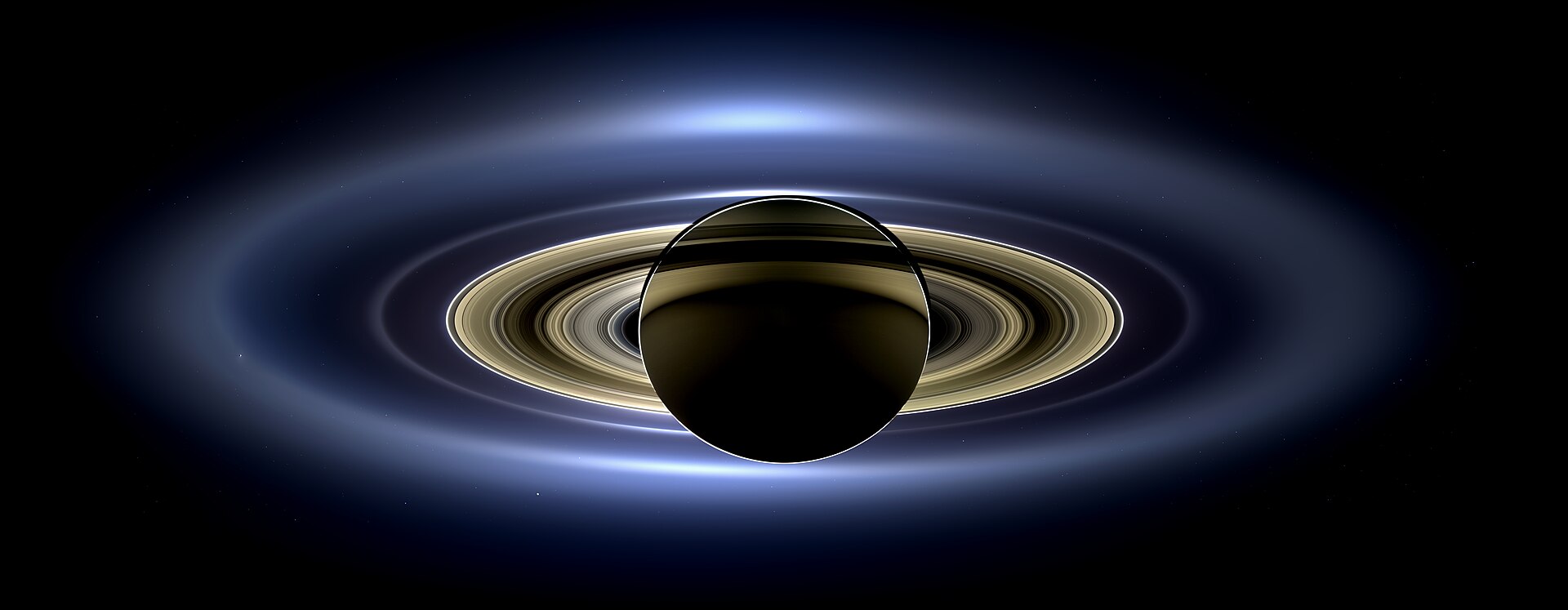It’s easy to lose sight of your place in the universe when you’re caught up in bills, breakups, and bumper-to-bumper traffic, but this NASA image offers a gentle reminder: cut the nonsense, you’re riding on a breathtaking, ocean-covered rock hurtling through the vastness of space.
Titled The Day the Earth Smiled, the image shows Saturn’s rings with Earth and its Moon visible in the same frame. It was captured on July 19, 2013, by NASA’s Cassini spacecraft as it orbited Saturn and its ring system.
It was taken by the robotic probe from “beyond” the gas giant on its dark side, framing Saturn as the main character, while Earth lingers in the background over 1.44 billion kilometers (898 million miles) away like a distant bystander.
The idea for the image came from Carolyn Porco, the planetary scientist who led Cassini’s camera team, who was inspired by the Pale Blue Dot image captured by the Voyager-1 probe in 1990 and made famous by Carl Sagan. Earthlings were told ahead of time that the image was being taken on July 19, 2013, to give a moment to go outside, look up, and smile to the camera.

A zoomed-in, unannotated version of The Day the Earth Smiled.
Image credit: NASA/JPL/SSI/CICLOPS
“People can celebrate it and join in. This will be like an interplanetary cosmic photo session,” Porco told BBC News in 2013.
“People can enjoy the fact that we have a robot out there, a billion miles away, taking our picture. How cool is that?” she added.
The end product (below) is a composite photograph, comprising 323 images taken over four hours in different spectral filters that were stitched together to create a full portrait of this viewpoint in the Solar System.
Any single human would be totally lost amid the immensity of the image, though. Some rough estimates at the time suggested that the chances of Cassini picking up on a photon bouncing off a waving arm on Earth are about one in a million.
However, perhaps that is the point. From over a billion kilometers away, you can’t see any individuals, just a beaming light in the dark abyss of space.

The fully processed composite photograph of Saturn taken by Cassini on July 19, 2013.
Image credit: NASA/JPL-Caltech/SSI
The image made quite a splash when it was finally revealed to the public. After a few months of processing the images, NASA released the final The Day the Earth Smiled mosaic on November 12, 2013, amid huge fanfare on social media and traditional news outlets. It even got the front page of the New York Times, which was a pretty big deal for an astronomy story.
Unfortunately, Cassini is no longer with us – but it did go out with a bang. In September 2017, the spacecraft was sent to its death by falling into Saturn. Its thrusters were instructed to stop and it cruised through the planet’s rings and clouds, gathering as much data as possible, until it dropped into the atmosphere of the planet, burning up like a meteor in the sky.
But hey, it was nice while it lasted. Thousands of scientific papers have drawn upon the fruits gathered by the Cassini mission, not to mention an immense trove of stunning imagery.
Source Link: This Image Of Earth (And Saturn) Will Change You